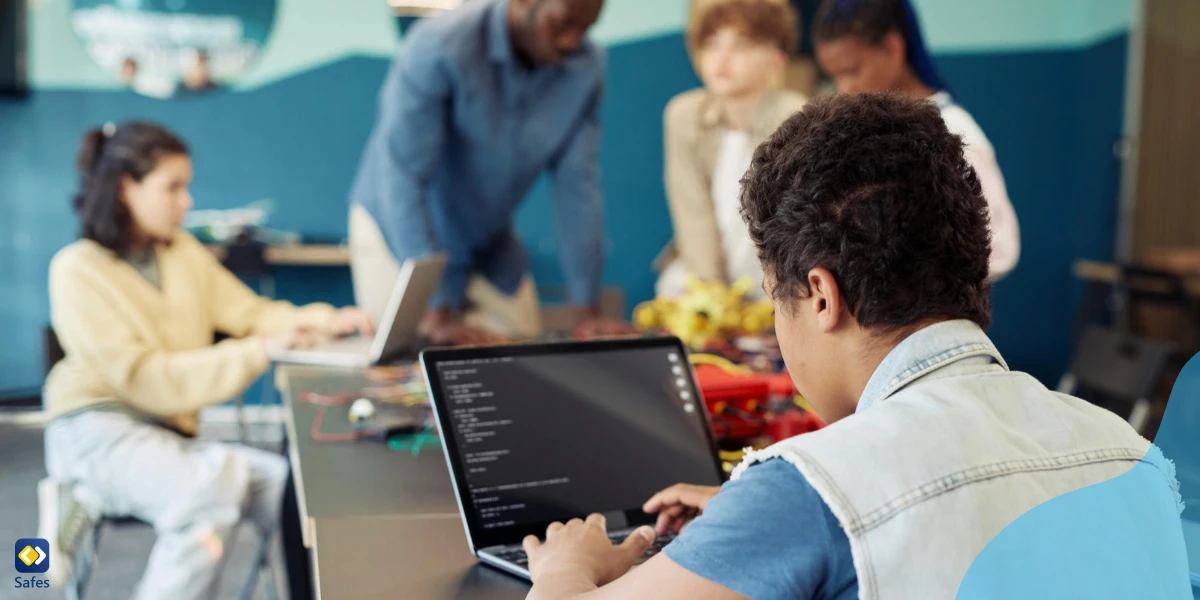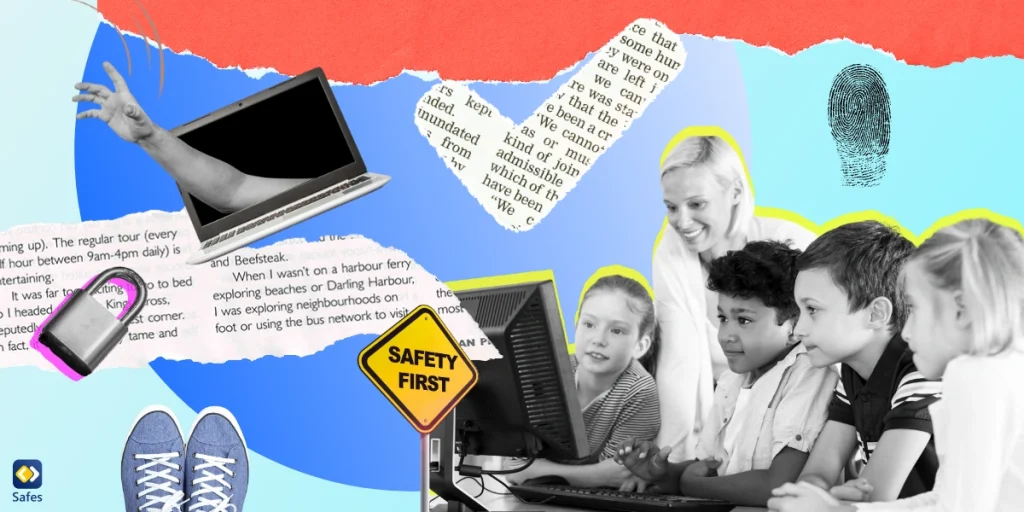With the increasing prevalence of cyber threats and scams, students must understand the risks they may encounter and learn how to safeguard their personal information. In this guide, we’ll provide comprehensive cybersecurity tips for students, empowering them to navigate the online world safely and responsibly.
Download and Start Your Free Trial of the Safes Parental Control App
Cybersecurity Concerns for Students
Before delving into specific cybersecurity tips, it is vital to understand the common risks that students may encounter online. By being aware of these threats, students can better protect themselves and make informed decisions about their online activities. Here are some of the most prevalent risks:
Social Engineering
Social engineering is a tactic used by cybercriminals to manipulate individuals into revealing sensitive information, such as passwords, login credentials, or personal data. These attackers exploit human psychology and emotions to deceive their victims. Students must be cautious and skeptical of any requests for personal information, especially from unknown sources.
Phishing Scams
Phishing scams involve fraudulent communications, often in the form of emails or text messages, designed to trick recipients into revealing their sensitive information. Students should be wary of unsolicited messages asking for personal information or directing them to click on suspicious links. It is crucial to verify the authenticity of such messages before responding or taking any action.
Weak Passwords
Using weak or easily guessable passwords puts students at risk of being hacked. Cybercriminals can employ brute force attacks to guess passwords and gain unauthorized access to accounts. Students should be encouraged to create strong, unique passwords for each of their accounts and avoid reusing passwords across multiple platforms.
Malware
Malware is malicious software designed to damage or gain unauthorized access to devices and networks. Students should exercise caution when downloading unfamiliar software or plugins, especially on school devices. They should only download applications from reputable sources and regularly update their devices to patch known vulnerabilities.

Essential Cybersecurity Tips for Students
Now that we have established a foundational understanding of the risks let’s explore some essential cybersecurity tips for students. Following these guidelines, students can enhance online safety and protect their digital identities. As a teacher or school administrator, you must teach your students these tips to increase cyber security awareness in schools.
Strong Password Practices
One of the fundamental practices for cyber security is creating strong passwords. Students should be educated on the importance of using unique and complex passwords for each of their accounts. A strong password typically includes a combination of uppercase and lowercase letters, numbers, and special characters. To help manage and remember their passwords, students can utilize password manager apps like 1Password.
Privacy Settings and Social Media
Social media platforms are integral to students’ lives, but they can also threaten their privacy and security. Students must understand the importance of privacy settings and how to configure them appropriately. They should be encouraged to review their privacy settings regularly and limit the amount of personal information they share online. Additionally, students should be cautious when accepting friend requests or engaging with unknown individuals on social media.
Identifying Phishing and Scams
Students should be trained to recognize and avoid phishing scams. They should be skeptical of unsolicited messages or emails asking for personal information or directing them to click on suspicious links. It is essential to verify the legitimacy of such communications before taking any action. Educating students about the common signs of phishing scams, such as grammatical errors, suspicious email addresses, or requests for urgent action, can help them identify and avoid potential threats.
Responsible Social Media Use
Responsible social media use is essential for students’ online safety. They should know the potential consequences of sharing sensitive or inappropriate content online. Educating students about the permanence of digital footprints and the impact their online actions can have on their future opportunities is crucial. Encouraging students to think before they post and to consider the potential audience for their content can help them cultivate a responsible online presence.
Avoiding Online Stranger Danger
Students should be cautious when interacting with strangers online. Reminding them not to share personal information or meet with individuals they have only encountered online is essential. Encourage students to report suspicious or inappropriate behavior to a trusted adult, such as a teacher or parent. By fostering open communication, students will feel more comfortable discussing any concerns or encounters they may have had.
Safe Online Shopping and Transactions
With the rise of e-commerce, students need to understand safe online shopping practices. They should be educated on the importance of shopping from reputable websites, ensuring the presence of secure payment methods, and being cautious of deals that seem too good to be true. Students should also know the potential risks of sharing their payment information online. They should only do so on trusted and secure platforms.
Regular Device Updates and Antivirus Software
Keeping devices updated with the latest software patches and security updates is crucial for maintaining a secure digital environment. Students should be encouraged to update their devices as soon as updates become available. Additionally, installing reputable antivirus software can provide extra protection against malware and other cyber threats.

Integrating Digital Safety Apps into Classroom Activities
Educators can integrate Trio Education into classroom activities to further enhance students’ cyber security awareness and education. This digital safety app for schools provides a comprehensive set of tools and resources to educate students about cyber security, privacy, and responsible online behavior. Through interactive lessons and engaging activities, students can learn about the potential risks they may encounter online and develop the necessary skills to protect themselves. The app can be customized to align with the specific curriculum requirements of each educational institution.
Encouraging Parent-Teacher Collaboration
To create a holistic approach to cyber security education, fostering collaboration between parents and teachers is essential. Educators should actively involve parents in discussions about cyber security and provide them with resources to support their child’s online safety. Regular communication between parents and teachers can ensure a consistent message about cybersecurity practices and reinforce the importance of responsible online behavior.
Cyber Safety Rules for Students: Conclusion
Cyber security is critical to students’ lives in today’s digital landscape. Following this article’s essential cybersecurity tips, students can protect themselves from common online risks and foster responsible online behavior. Integrating Trio Education into classroom activities and encouraging parent-teacher collaboration further enhances students’ cyber security education. By equipping students with the necessary knowledge and skills, we can empower them to navigate the digital world safely and confidently.
Let’s not forget that cyber security is an ongoing conversation, and students must stay informed and updated about emerging threats and best practices. By implementing these cyber security tips and utilizing Trio Education, we can create a safer digital environment for our students.
For further reading on the importance of cyber security for students, refer to the National Cyber Security Alliance website. Stay safe and secure in the digital world!
Your Child’s Online Safety Starts Here
Every parent today needs a solution to manage screen time and keep their child safe online.
Without the right tools, digital risks and excessive screen time can impact children's well-being. Safes helps parents set healthy boundaries, monitor activity, and protect kids from online dangers—all with an easy-to-use app.
Take control of your child’s digital world. Learn more about Safes or download the app to start your free trial today!




